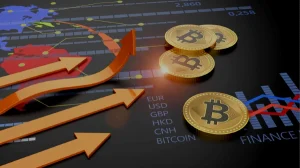How Forex Automated Assistants Are Revolutionizing Wealth Management for Investors
Imagine a world where your wealth grows while you sleep, where your investments are monitored, analyzed, and acted upon in real-time without any human intervention. This is no longer a futuristic dream; it’s happening now, thanks to Forex automated assistants. As wealth managers and investors, the pressing question is not whether these digital tools will transform the landscape of wealth management—but how we should be integrating them into our strategies today.
The Future of Wealth Management: Is It Time to Embrace Forex Automation?
Is relying on human intuition and traditional market analysis enough in a market that never sleeps? Can automated systems outperform us, or do they risk becoming our biggest blind spots? These are questions wealth managers must grapple with as Forex automated assistants begin to dominate the conversation.
What Exactly Is a Forex Automated Assistant?
Forex automated assistants, often referred to as Forex trading bots, are algorithms that execute trades based on pre-set conditions and data analysis. These programs aren’t limited by emotions, exhaustion, or even time zones. They analyze vast amounts of data—market trends, economic indicators, geopolitical events—and execute trades instantly when opportunities arise.
But it’s crucial to distinguish between automation for the sake of convenience and automation as a deliberate, data-driven strategy. This is not about replacing human traders but augmenting their capabilities by removing the noise and biases that can often cloud decision-making.
Why Forex Bots Are Transforming Wealth Management
It’s no secret that the wealth management industry is evolving. In the past, the most successful investors were those with the best intuition, extensive networks, and years of experience. Now, the field is more data-driven, and Forex automated assistants are enabling investors to execute strategies that are more calculated and precise than ever before.
- Around-the-Clock Market Monitoring
Unlike human traders, Forex automated assistants don’t need to rest. They can track global markets 24/7, making them invaluable in Forex trading, where currency markets operate around the clock. This constant vigilance allows for quicker responses to market shifts that a human might miss simply because they are asleep or away from their desk. - Removing Human Bias from Trading Decisions
Human emotions—fear, greed, panic—can interfere with rational decision-making. How many times have you heard stories of investors holding onto losing positions, hoping for a turnaround, only to incur even more significant losses? Forex automated assistants operate purely on data. They execute trades based on predefined algorithms, reducing the chances of human error and emotional misjudgments. This data-driven approach aligns perfectly with the principles of modern wealth management, which emphasizes risk management and calculated strategy. - Efficiency and Speed
In wealth management, especially in Forex trading, timing is everything. A small delay in executing a trade can mean the difference between a profit and a loss. Forex bots execute trades instantly, seizing opportunities the moment they arise. This advantage is particularly crucial in high-frequency trading environments where milliseconds matter.
Are Forex Automated Assistants the Answer to Market Volatility?
One of the key selling points of Forex bots is their ability to react quickly to market volatility. But, as with any tool, the outcome depends on how you use it. Forex automated assistants are excellent at responding to predefined scenarios—sharp drops, price reversals, trend continuations—but they may struggle in markets driven by unexpected geopolitical events or economic shocks.
For instance, during periods of extreme volatility, algorithms that are too rigid may execute trades that a human trader might avoid due to experience and intuition. Wealth managers, therefore, must not view Forex bots as infallible. Instead, they should be seen as complementary tools that enhance human judgment. The balance lies in understanding when to trust the data-driven decisions of an automated system and when to intervene.
Optimizing Wealth Management Strategies with Forex Bots
Forex automated assistants are not a one-size-fits-all solution. Their real power lies in their ability to customize strategies based on individual preferences. Investors can set specific criteria for risk tolerance, time horizon, and trading style.
- Custom Strategy Execution: Investors can program Forex bots to follow strategies like scalping, swing trading, or trend following. For instance, a wealth manager overseeing a large portfolio might set different bots to manage various aspects of their client’s investments—one for short-term trades, another for long-term positions.
- Portfolio Diversification: Automated assistants can manage diverse portfolios by trading multiple currency pairs simultaneously. This ability to handle large-scale, complex portfolios makes them attractive not just for individual investors but also for institutional wealth managers.
The question here is: are you leveraging automation to scale your portfolio in ways that manual management simply can’t achieve? And how do you ensure your strategy is still adaptable in rapidly changing market conditions?
The Risks of Relying Too Heavily on Forex Automated Assistants
While the advantages of Forex bots are compelling, there are risks that wealth managers must consider. Automation can be a double-edged sword. If programmed incorrectly, or if markets behave unpredictably, bots can compound losses just as quickly as they can generate profits.
- Technical Glitches
No technology is immune to failure. A Forex bot’s ability to execute trades depends on stable internet connections, market data feeds, and the robustness of the algorithms themselves. A bot malfunction could result in unintended trades or missed opportunities. - Regulatory Scrutiny
As the popularity of algorithmic trading grows, so does regulatory oversight. Wealth managers need to stay updated on regulations to ensure compliance. For example, certain jurisdictions may place restrictions on high-frequency trading or automated systems to prevent market manipulation. - Overfitting to Historical Data
Forex bots often rely on backtesting—testing a strategy against historical data—to determine their efficacy. While this can be a valuable tool, it also carries the risk of overfitting. A strategy that performs well based on past data might fail when applied to future market conditions, especially if those conditions differ significantly.
The Future of Forex Automation in Wealth Management
As we look to the future, it’s clear that Forex automated assistants are not a passing trend but a permanent fixture in wealth management. The question for investors and wealth managers is not whether to use them but how to integrate them into a broader investment strategy effectively.
Will artificial intelligence continue to refine Forex bots, making them more adaptive and intuitive? Can we expect blockchain technology to further enhance transparency and execution speed in automated Forex trading? These are the questions wealth managers must stay ahead of to remain competitive in this rapidly evolving landscape.
Should You Embrace Forex Automation?
Forex automated assistants offer significant advantages—speed, data-driven decisions, and around-the-clock market monitoring. But they are not without their challenges. To leverage these tools effectively, wealth managers must combine the strengths of automation with human insight and oversight.
The key takeaway: automation is here to stay, but its success depends on how you integrate it into a balanced, thoughtful wealth management strategy.
So, are you ready to take the next step in revolutionizing your investment approach with Forex automated assistants?








